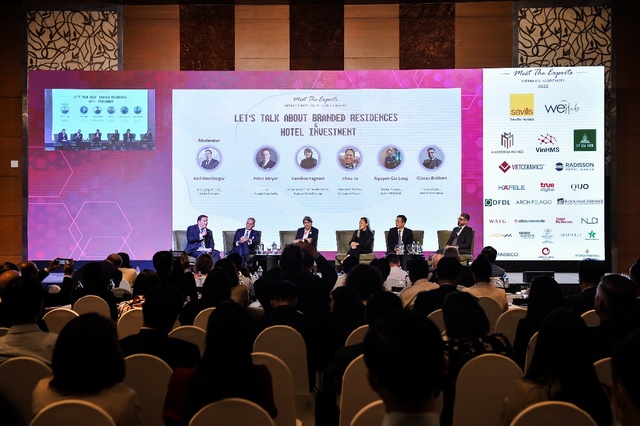Hotel room occupancy is still not half of pre-Covid
Vietnam’s hotel market is in the process of recovering
According to a representative of STR, currently the room capacity has not reached half of the capacity in the same period of 2019. However, the easing of travel restrictions and the opening of international tourism has helped many hotels in the period. City improves business performance. Hotels and resorts at tourist destinations are also in the process of recovering, but not yet stable, especially in localities that rely heavily on international visitors such as Da Nang and Nha Trang. As of the end of March 2022, room occupancy in Vietnam market is still below 20%; The average room rate is still nearly 20% lower than in 2019.
Before the Covid-19 epidemic, Southeast Asia was one of the most popular tourist destinations in the world. In particular, Vietnam has emerged as a country with strong growth rates in both domestic and international markets with four consecutive years recording double-digit growth rates (as of 2019). Restrictions on travel, social distancing and border closures are major blows to the growth momentum of Vietnam’s tourism industry.

Mr. Mauro Gasparotti, Director, Savills Hotels APAC
Mauro Gasparotti, Director of Savills Hotels APAC, who hosted the Meet the Experts event, said:From the beginning of 2022, tourism demand has begun to return, including international tourism activities. Currently, Vietnam is one of the countries in the region with the least barriers to the international visitor market. We are facing the opportunity to meet the demand for tourism recovery from the group of Asian tourists after a long time having to suspend the trips. Hotels in the city also recorded an increase in international arrivals in the past few weeks. Although hotel room rates and occupancy are still lower than pre-pandemic levels and compared with some other destinations in the region, overall, these two indicators tend to improve.
The decline in demand is just one of the barriers to the recovery of the tourism industry. Besides, it is impossible not to mention the large supply growth rate at some domestic tourist destinations. The number of hotel-branded projects of international and regional operators is expected to double in the next three years, from 127 to 261 projects in 2025. This could increase competition pressure on hotels. prices in some destinations as well as in terms of human resources of the hotel industry across the country.”
At the Meet the Experts conference, the speakers also shared that a part of domestic and international tourists are gradually becoming more aware of sustainability in tourism activities, such as the conservation of community factors. communities, local culture and minimize negative impacts on the environment. Therefore, projects that focus on sustainability can help many investors increase their competitive advantage during the operation phase.
During the discussion session, new destinations such as Quy Nhon or Phu Yen assessed by experts will attract more and more attention from investors. The rich natural landscape and unique local culture are the great advantages of these localities, especially in attracting international tourists who love to experience.
Branded Residence – Supply problem and brand factor
The condotel model will still be a product with a large market share of Vietnam’s tourism industry. According to statistics from Savills Hotels, 16,000 condotels and resort villas were opened for sale in 2019, and plummeted to only 4,000 units in 2021. In 2022, the market is expected to have more than 8,000 products. Products are on sale, with nearly 50% of the supply bearing international and regional hotel brands.
In today’s context, buyers are not only considering selling price and growth potential, but also require products to be carefully planned with a clear management structure. Going with the brand, also known as the Branded Residence, can bring synergistic value to the project as investors can benefit from expertise, reputation and prestige. of the brand in the process of development and market access.

Speakers participating in the discussion on the topic of Branded Residence at Meet the Experts 2022
Carolina Fagnani, Senior Director – Southeast Asia and the Pacific, Radisson Hotel Group commented:During project development, a careful planning process along with due diligence and thorough market research are essential to minimize risks in the development process. The success of Branded Residence projects cannot be attributed to the association with a reputable hotel brand or operator, and also with professional and market-appropriate project management policies. target. For Branded Residence at a resort destination, especially if it comes with a Rental Program, sticking with an appropriate brand will help ensure property value, at the same time bring different experiences and Various utilities for the project. Vietnam is still a developing market with a lot of room for growth, so investors will gain a great competitive advantage if they catch new trends in the market early.”
Following Economic Life
at Blogtuan.info – Source: cafebiz.vn – Read the original article here



